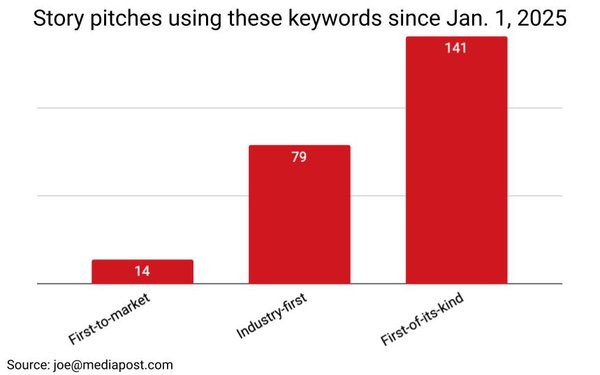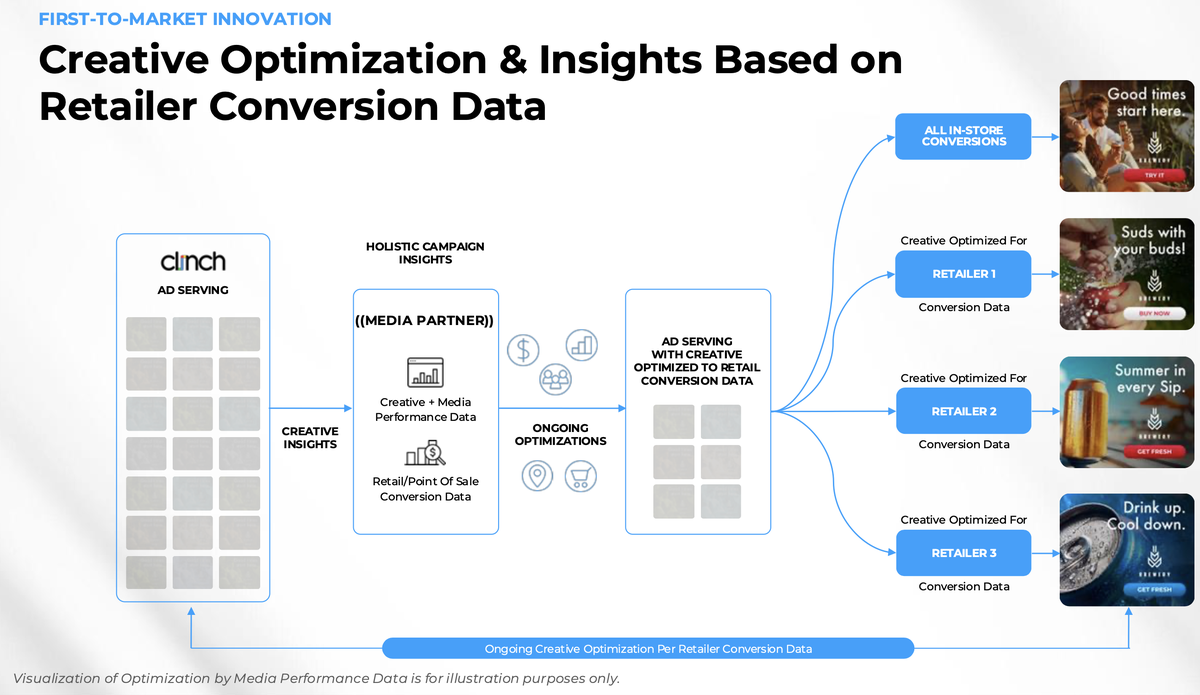
Today's column is about industry firsts. Actually, a multitude of
them, but starting with two being announced just this morning.
One is "an industry-first integration" between sell-side technology provider Magnite and Interpublic's Acxiom unit touted as
being the first to enable "audience decisioning on the sell-side using Acxiom’s full suite of data services."
I received that pitch early Wednesday afternoon and immediately followed up
asking the press contact to clarify how it actually was an industry-first, or whether it just was a first for Magnite and Acxiom, and if it truly was an industry-first, how Magnite backed the claim
up.
I never heard back, but I did a little digging and found numerous references to other "sell-side" data integrations "activating" demand-side programmatic buying, including a 2023 announcement by Magnite itself touting adoption by
three buy-siders: GALE, GroupM (now WPP Media) and Omnicom Media Group, as well as others using similar claims by peers and competitors like one from Pubmatic three years ago.
advertisement
advertisement
This morning's other "first-to-market" announcement
comes from Clinch -- the self-described "Agentic AI platform for omnichannel advertising" -- which touted "a new first-to-market DCO [dynamic creative optimization] strategy available within
its Flight Control platform, the ability to optimize creative performance using media performance data. This evolution empowers advertisers to connect creative decisions directly to measurable
business outcomes, further closing the loop on attributed campaign performance."
I also followed up with Clinch's press contact, who at least responded to my follow-ups about what the claims
actually mean and how Clinch was substantiating them.
The responses didn't exactly substantiate how and why it was an industry first, but it reiterated the claim, asserting:
"It is a
new creative optimization strategy available in Clinch’s Flight Control platform. Flight Control ingests aggregated performance data from media partners, integrates them into its creative
optimization engine, to optimize towards creatives driving the best performance, and visualizes those insights for ongoing learnings. Clinch is the first to offer this because it is the only
solution that automates the process of connecting creative and media data to deliver real-time optimization and holistic, end-to-end campaign analysis."
The announcement did include a
third-party testimonial from an agency using the new tool -- Canvas Worldwide, which used it for its automotive client Genesis -- and included a quote from Canvas Vice President-Director of
Performance Strategy Marisa Corvallis describing it as an innovation enabling the feature to optimize its media tactics and creative placements, but it still wasn't clear how and why it was an
industry-first capability.
To their credit, Clinch was able to provide a graphic illustrating how the media/creative optimization actually works (see below).
The point of this lead
isn't to make light of industry-first claims. I've been getting them for nearly half a century as an advertising trade reporter, and it is my job to vet the claims and put them in context for our
readers.
The real point is that it's getting harder and harder to vet those claims, because they often are about proprietary, black-box technologies -- or more recently, "data integrations,"
"clean rooms," and other ad-tech industry hyperbole that sound important, but often are difficult to explain, challenge and vet other than people saying what they say. That's one of the reasons I
often use explicit "pull quotes" from executives as photo captions of them backing up the claims, because if they're willing to put their good names and reputations on them, who am I to say.
The truth is, I'm knowledgeable about how ad tech works for a trade reporter, but I'm not an engineer -- so even if I get the opportunity to look under the hood, I probably don't have the ability
to understand what's actually going on.
So in the end, I can only report what people claim, how they respond -- or don't -- to follow questions asking how I can back their claims so our
readers can accept them.
A second point is that the language the tech-heavy side of the ad industry uses to describe things has become equally difficult to understand and often is just
meaningless buzzwords filling in for explicit explanations about what the moving parts do and why they do them better than what others have been doing before.
This has only increased over
time. I don't have the quants on it, but I'm thinking about how to get my arms around it and may come back with an analysis on that in the near future.
Nearly a quarter century ago, when I
began covering this part of the ad industry more closely for MediaPost, former MediaPost colleague Paul Gough and I began publishing a recurring feature to shed some light on this. We called it the
"Hyperbabble Of The Day" (a mashup of hyperbole and babble) in which we would pull a verbatim sentence or paragraph from a press release illustrating the fine art of ad-tech hype, jargon and
meaningless rhetoric, and published it, anonymously, of course.
Some ad-tech industry press contacts said they actually appreciated it at the time, because it helped them explain to their
clients why such language might not actually be a good thing.
Anyway, I've been thinking about resurrecting that feature, and maybe even coming up with an annual MediaPost editorial award for
the best of each year.
Meanwhile, I was inspired by today's industry-first to at least try to quantify what I've perceived as a growing trend in that hyperbolic direction, so I indexed my own
inbox for press pitches using those keyword phrases since the beginning of the year (see chart above).
I'm not saying my inbox is a representative sample of industry hype, but as
editor-in-chief of MediaPost, it's not nothing. Take it for what it's worth.
Addendum: After this column was published, a Magnite spokespersons did follow up and clarified that the
industry-first news was actually just an Acxiom-first sell-side integration, adding: "Essentially it enables advertisers to activate data on the sell side and allows for increased match rates,
advanced forecasting and more budgets towards working media."
